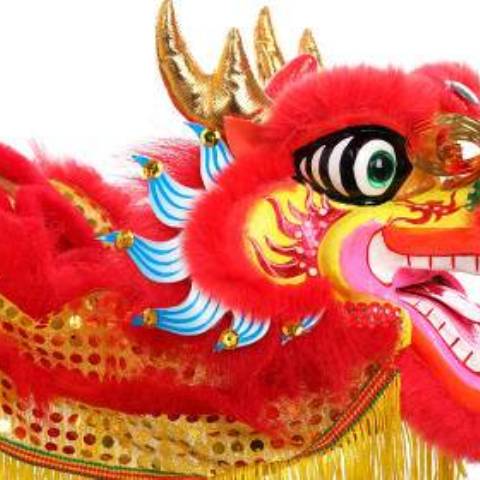

Chun Jie, or Spring Festival, is one of the most distinctive Chinese
traditional festivals. It marks the end of winter and the beginning of the Chinese Lunar New Year. The Spring Festival break lasts about 15 days. It is the most exciting and busiest time of the year for the Chinese. People make arrangements for family reunions and spend a whole day preparing food and decorating houses. Every family member returns home and has dinner together.
Spring Festival has a history for over 4,000 years. It all originated from a furious beast named “Nian.” On the first day of the New Year, Nian would come and attack each village. It likes to eat livestock, and sometimes even children. People were terrified by the beast but had no idea how to deal with it. One day a beggar came to the village and saw the suffering of the people. He offered to subdue Nian.
On New Year’s Eve, Nian came and attacked the village. It saw the red paper cuts, spring couplets and all the decorations the beggar had put up. Nian was terrified and ran away because it was afraid of red. Therefore, every year during this time the villagers would put on red adornments to scare away Nian, and this gradually became a festival.
There are a series of customs for Spring Festival. One of them is called “Shou Sui,” which means staying up late on New Year’s Eve. Family members will sit with each other and chat until it is 12 a.m. The tradition of Shou Sui came from the folk tale of Nian. Every New Year, family members would pray to their ancestors for safety. Since “Nian” likes to come out at night, nobody dares to go to sleep, so people stay up late to protect themselves. This gradually became a tradition.
Another custom is giving “Hong Bao” to children. Hong Bao means "red envelope" in Chinese. On the first day of the Chinese lunar year, the elderly put money into Hong Bao and give it to children in the family as a wish for good fortune in the coming year. At night, parents would put Hong Bao under pillows when their children go to bed. People believe that the money would suppress evil spirits and bring safety to the kids.
The practice of fireworks is also a typical tradition of the Lunar New Year. The firecrackers are usually rolled up in red paper, which indicates good luck. In ancient China, firecrackers were used to scare away evil spirits. In modern days, however, the firecrackers are only used for fun. It bids farewell to the old year and welcomes the new.
Adornments have been an integral part of the festival. People like to put spring couplets on the walls. This is a special form of Chinese literature. A couplet is composed of two auspicious phrases. During Spring Festival, windows and doors in each house are decorated with red color couplets with themes of good fortune, wealth, and others. In addition to spring couplets, Chinese people like to post paper cuts. Paper cuts, usually with auspicious patterns, bring an atmosphere of happiness and prosperity. In addition, inverted “Fu” is a very popular decoration. Fu means “good luck,” and the term “inverted” in Chinese is a homophone to the word that means “come,” so the inverted Fu symbolizes that “good fortune is on the way.”
As a boarding student here, not being with my family during Spring Festival is hard. It is really great that at Darlington I can celebrate the Lunar New Year with all my friends at a special annual celebration that is led by fellow Chinese students. It makes me feel like I am home again.
For Chinese people, Spring Festival means a new start. It gives people hope and happiness. It brings families back together. Spring Festival has become an essential part of the life of the Chinese people. It is a tradition that will never die.